.jpg)
A GREEK TERRACOTTA THEATRE MASK , HELLENISTIC PERIOD, CIRCA 3RD2ND CENTURY B.C. Christie's
The mask as a device for theatre first emerged in Western civilization from the religious practices of ancient Greece. In the worship of Dionysus, god of fecundity and the harvest, the communicants' attempt to impersonate the deity by donning goatskins and by imbibing wine eventually developed into the sophistication of masking.
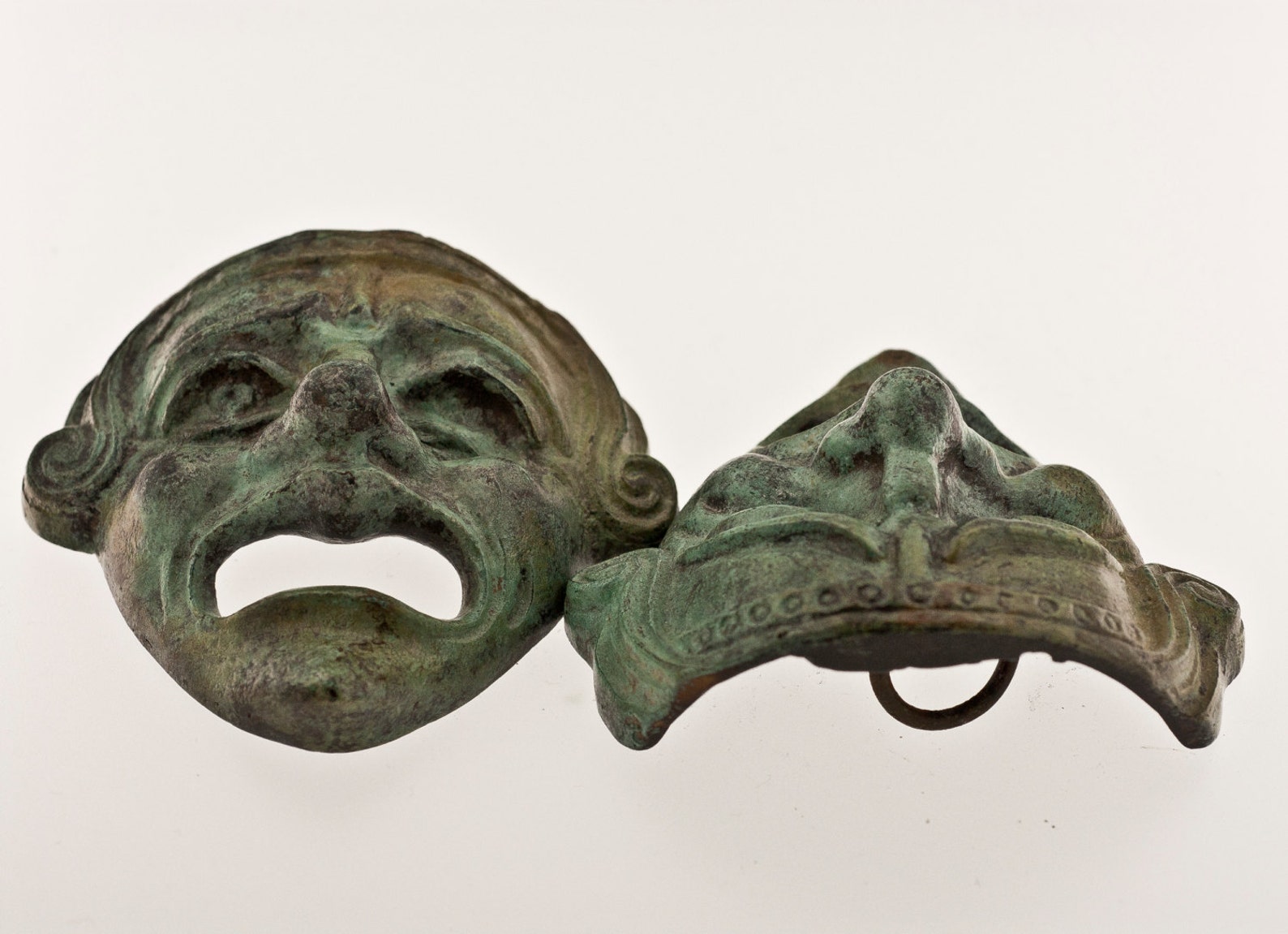
Bronze Greek Theatre Mask Ancient Greek Drama Actors Mask Etsy
Greek theatre - Masks Through theoretical and practical tasks students develop an understanding of the purpose of masks in ancient Greek theatre. Students use Socrative to compete against their peers in a space race showing their research skills, understanding of the history and socio-cultural context of ancient Greek theatre and the conventions of ancient Greek theatre.
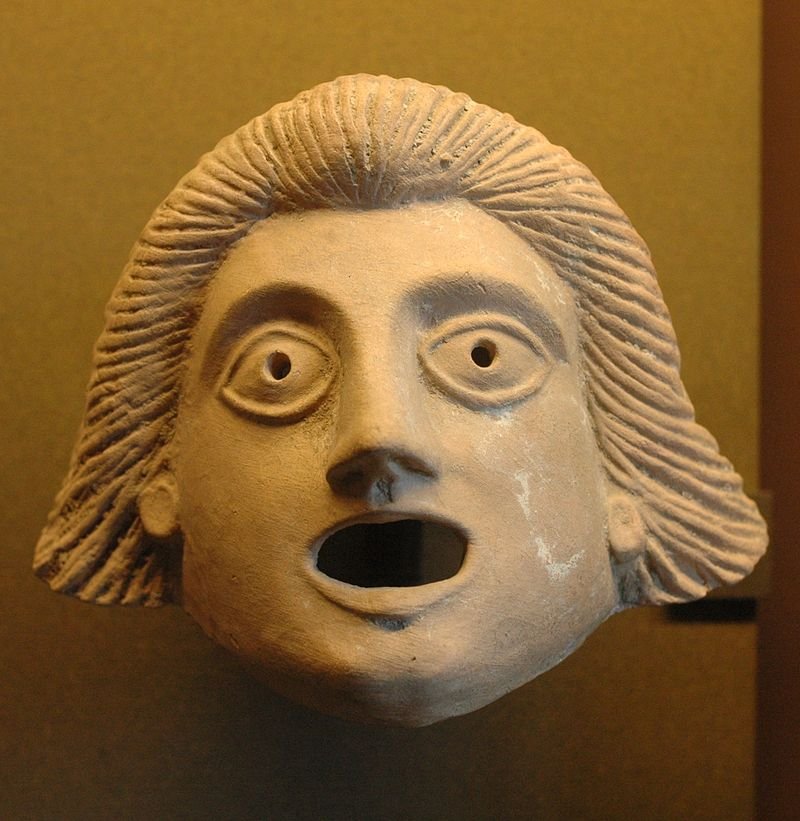
Ancient Greek Costumes, Masks And Theatre In Focus
The masks in Greek theatre consisted of comedy and tragedy, and were always the main themes of the performances. What were they made of? They were mostly made out of light materials, such as: stiffened linen. leather. wood. cork. The wig consisting of animal or human hair.
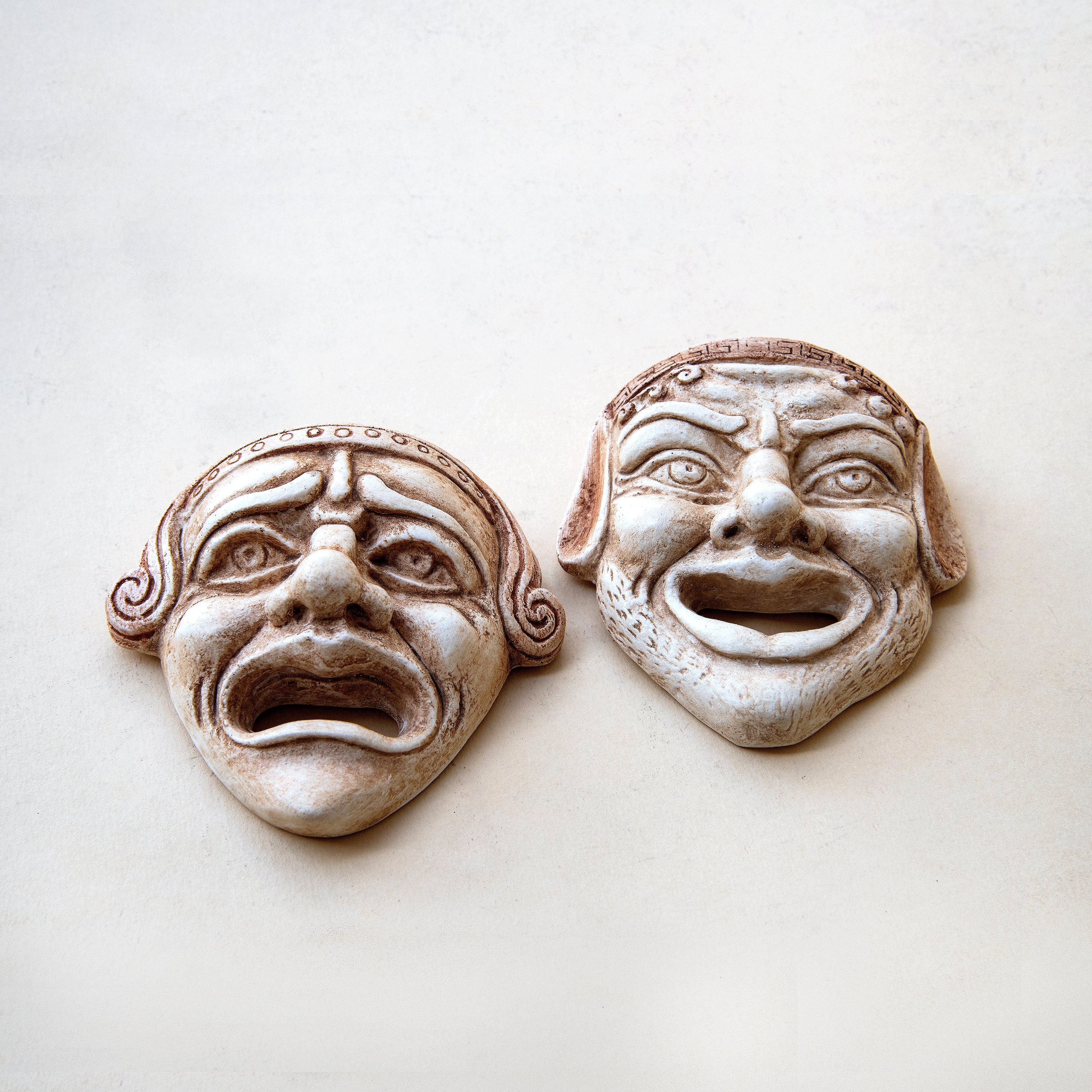
Ancient Greek Drama Theater Masks, Set of 2 Comedy/Tragedy Actors Masks, Theatre Symbol Museum
November 13, 2023 Intricate linen masks were central to theater performances in ancient Greece. Credit: Carole Raddato, CC BY-SA 2.0 One of the most enduring art forms from ancient Greece is that of theater.
Ancient Greek theatre mask 4th or 3rd century BC [1880x2249] ArtefactPorn
Greek theatre began in the 6th century BCE in Athens with the performance of tragedy plays at religious festivals. These, in turn, inspired the genre of Greek comedy plays. The two types of Greek drama would be hugely popular and performances spread around the Mediterranean and influenced Hellenistic and Roman theatre.
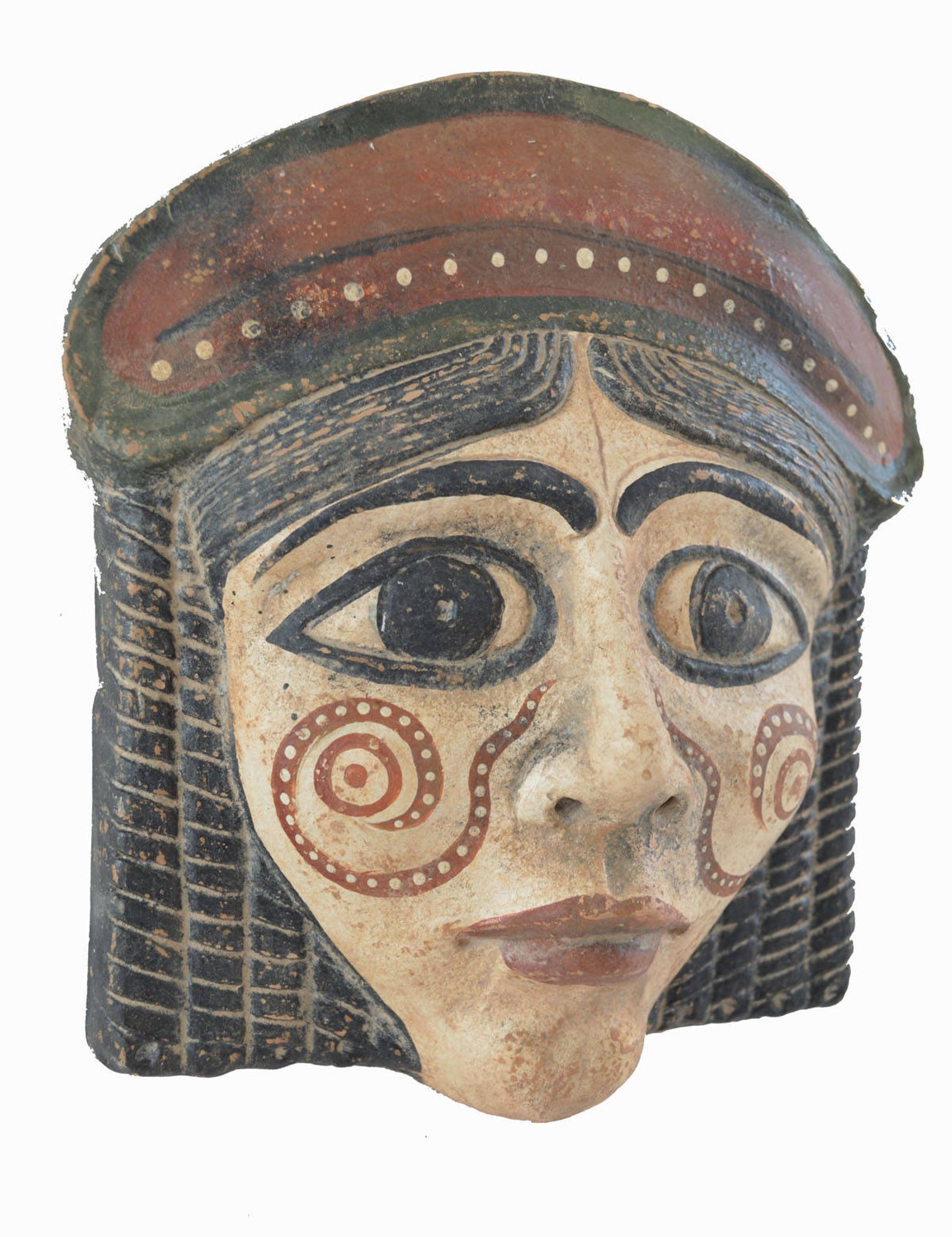
Ancient Greek Woman Theatrical Mask Quality Artifact Etsy
A Greek chorus ( Greek: χορός, translit. chorós) in the context of ancient Greek tragedy, comedy, satyr plays, is a homogeneous group of performers, who comment with a collective voice on the action of the scene they appear in. [1] The chorus consisted of between 12 and 50 players, who variously danced, sang or spoke their lines in unison.

Ancient Greece theatre masks in marble stone Stock Photo Alamy
MLA Style. Cartwright, Mark. " Greek Tragedy Theatre Mask ." World History Encyclopedia. World History Encyclopedia, 08 Mar 2015. Web. 07 Jan 2024. A votive offering in a the form of a larger-than-life bronze tragedy theatre mask. Possibly by Silanion, 4th century BCE. (Archaeological Museum of Piraeus)

Greek masks Ancient greek costumes, Ancient greek theatre, Theatre masks
Theater in ancient Greece became very popular. Tragedy, comedy, and satyr plays were theatrical forms. Tragedy and comedy were viewed as completely separate genres. Three well-known Greek tragedy playwrights of the fifth century are Sophocles, Euripides, and Aeschylus. Ancient Greek masks and costumes

Images For > Greek Masks Greek drama masks, Mask, Felt mask
The ancient theater of Dodona is one of the largest ancient Greek theatres, with a capacity of around 18,000 people. It is located in the Region of Epirus, a short drive from the picturesque city of Ioannina. Ancient Dodona was originally a sacred place where Gaia, Mother Earth, was worshiped.

Ancient Greek Costumes, Masks And Theater In Focus Ancient Pages
The use of masks in ancient Greek theater draw their origin from the ancient Dionysian cult. Thespis was the first writer, who used a mask. The members of the chorus wore masks, usually similar to each other but completely different from the leading actors. Picture 1 portrays a sort of mask suitable for the chorus.
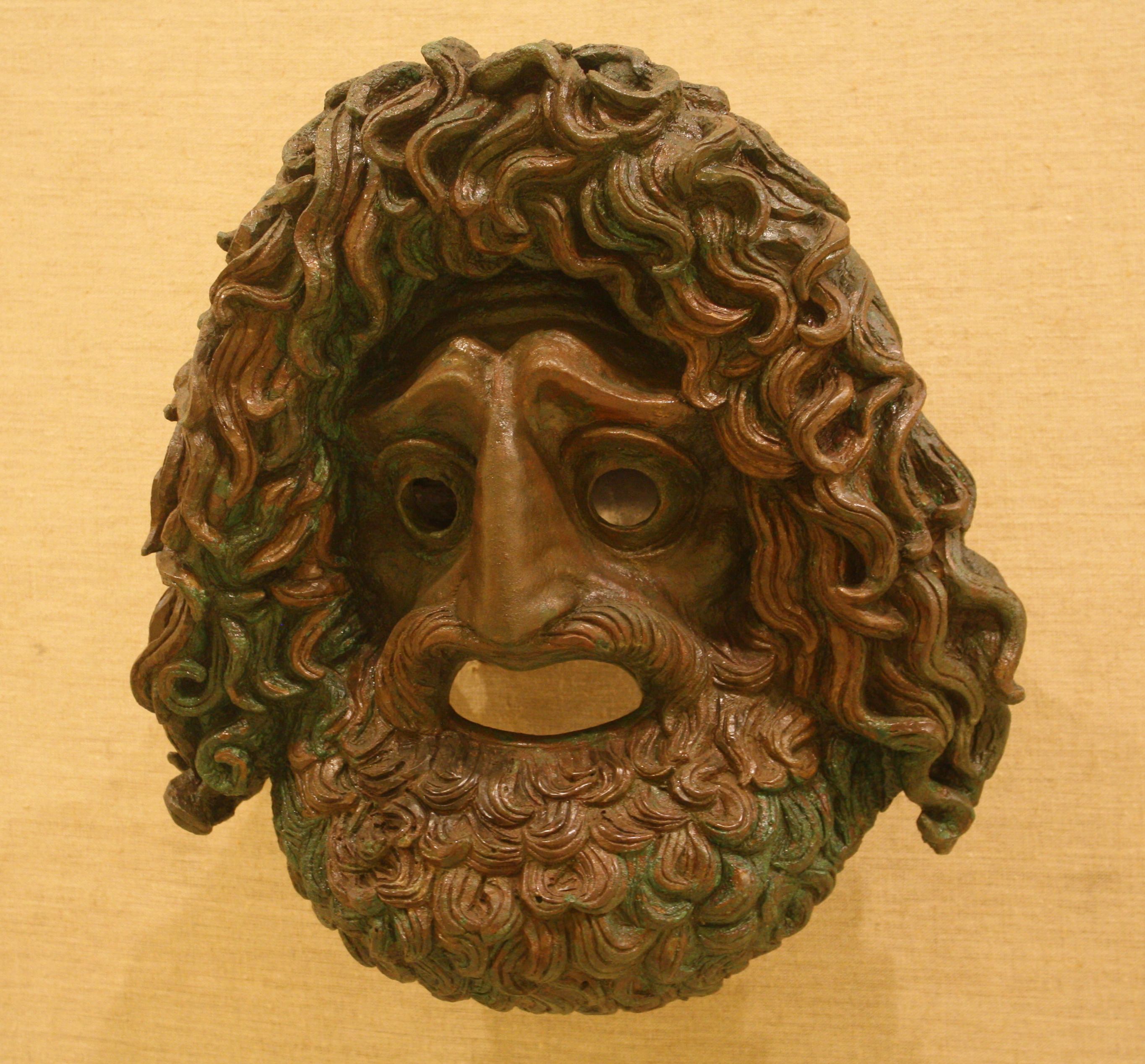
Greek Tragedy Theatre Mask (Illustration) Ancient History Encyclopedia
There are no surviving masks that were actually worn from Ancient Greek Theater. This is due in part to the fact that they were made from perishable material such as "stiffened linen or wood" (MAE). We do have some remaining terracotta examples, which were not worn, but would have been dedicated to temples.
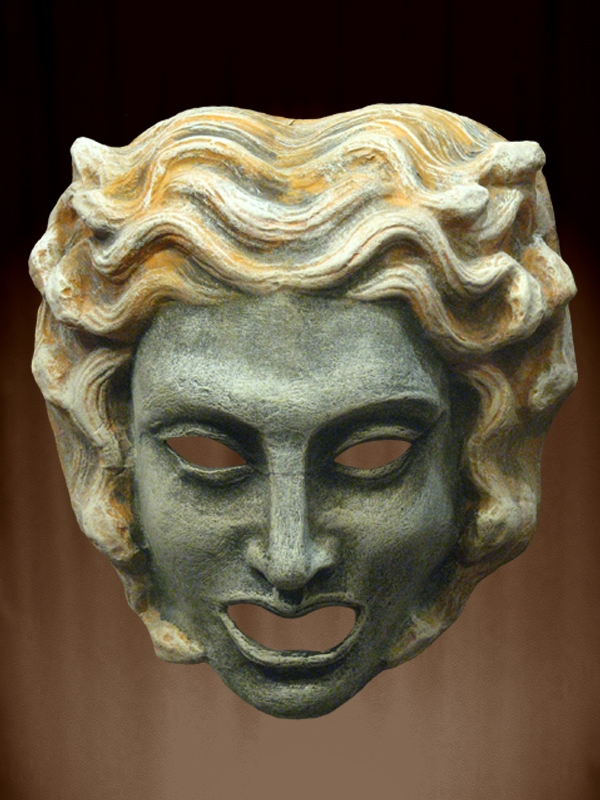
MYTHOLOGICAL MASK OF the GREEK THEATER OF MEDUSA OR
Teaching History with 100 Objects - A Greek theatre mask Search the objects Terracotta flask in the shape of a comic actor seated on an altar; from South Italy, about 150 BC. Terracotta tragic mask, representing a female character with arched brows; Roman, 1st - 2nd century AD.
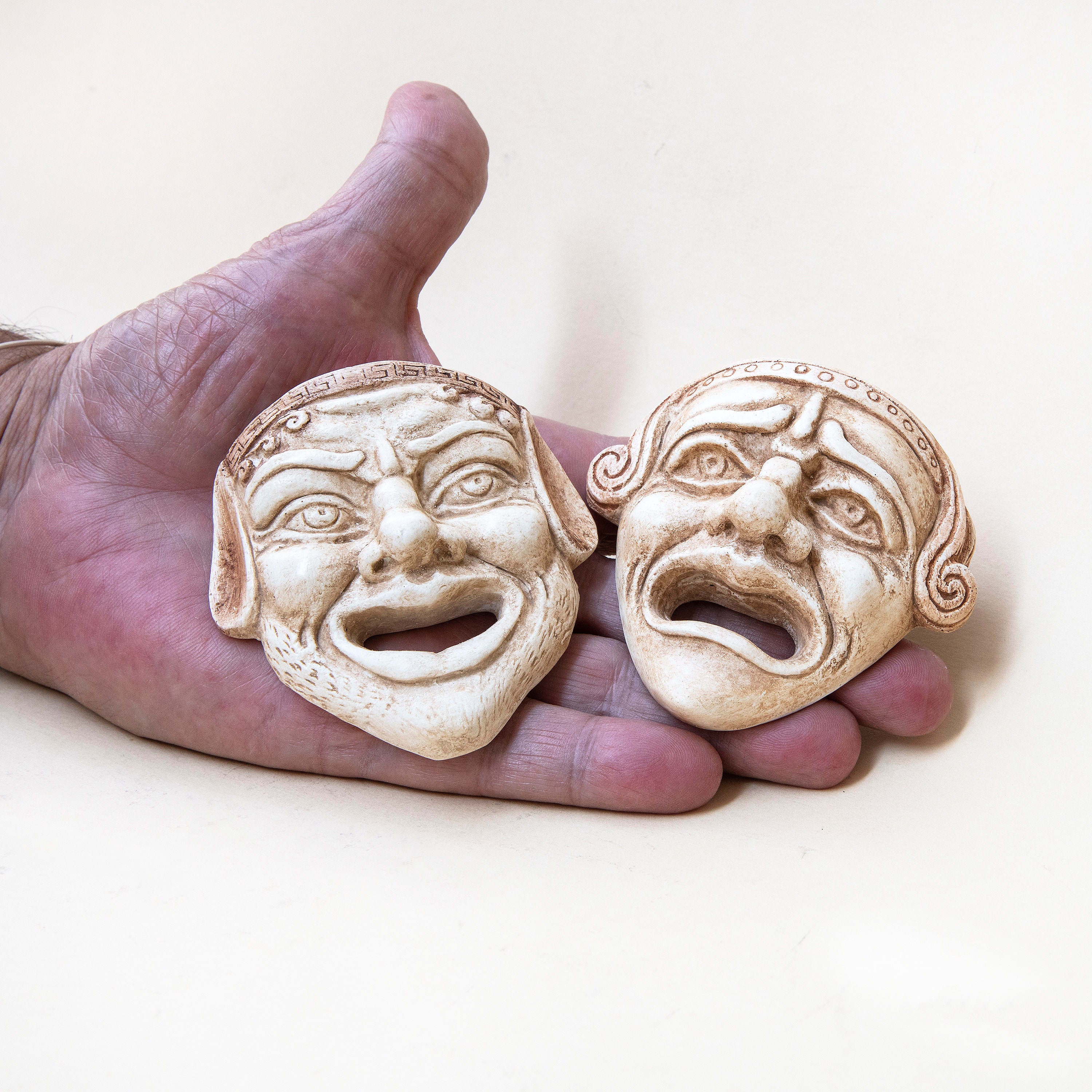
Ancient Greek Drama Theater Masks, Set of 2 Comedy/Tragedy Actors Masks, Theatre Symbol Museum
Greek Masks - Ancient Greek Theatre Masks Ancient Greek civilization was responsible for many advances that made our modern civilization possible, but their promotion of many art forms is maybe it's most recognized and best-remembered feat.

Goddess Mask for Greek Theater by
Terracotta calyx-krater (mixing bowl), 350-25 BCE; with Terracotta roundels with theatrical masks attached, 1st century BCE Ancient Greek theater originated at religious festivals, a celebration of the skill of man, handed down by the gods.Ancient architects erected the first theaters in the polis Athens, similar to the theaters that modern theater-goers now know.

greekmasktransparentbg Greek drama masks, Theatre masks, Masks art
The theater in ancient Greece was a place where politics, religion, popular figures, and legends were all discussed and performed with great enthusiasm. People came from all across the Greek world to attend the popular theaters held in open-air amphitheaters.
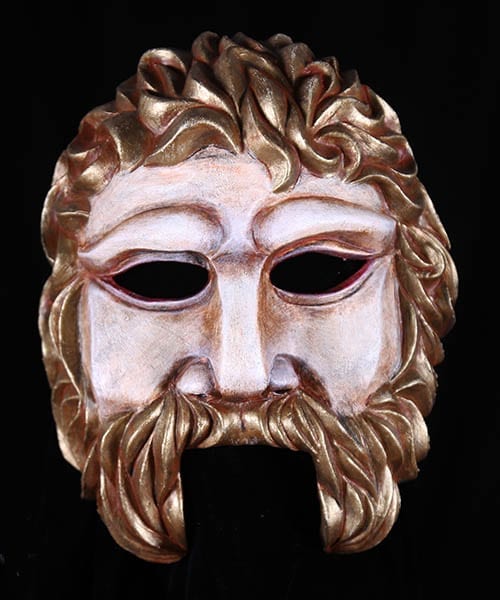
Greek Theater Masks by
The festival was created roughly around 508 BC. While no drama texts exist from the sixth century BC, the names of three competitors besides Thespis are known: Choerilus, Pratinas, and Phrynichus. Each is credited with different innovations in the field. Some information is known about Phrynichus.